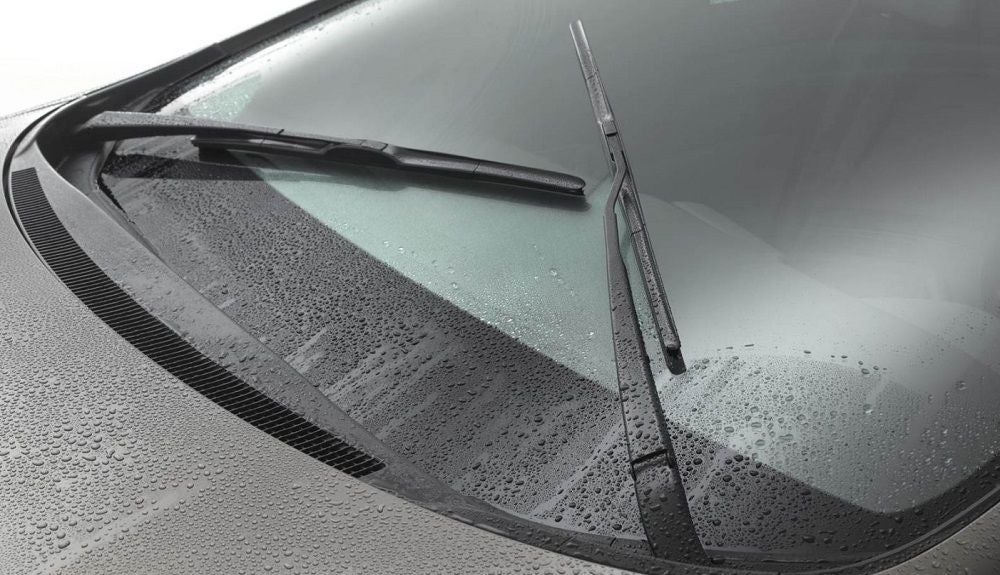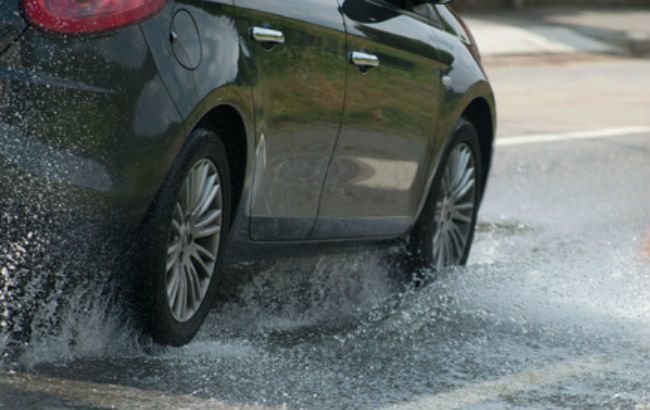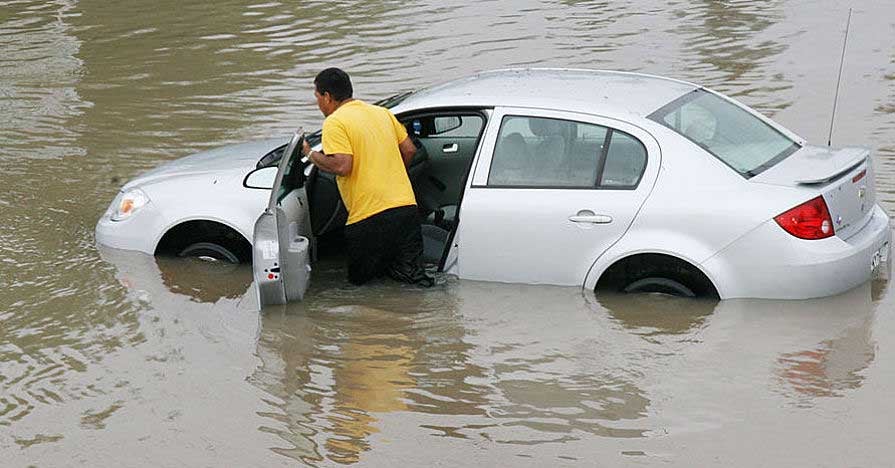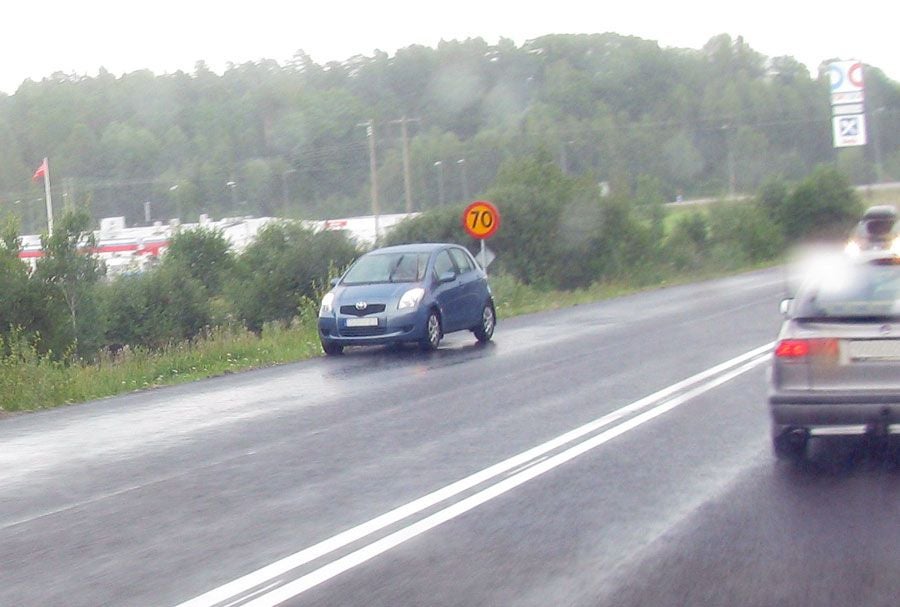It’s that time of the year again people – when the heavens open and unleashes unrelenting rain upon us. It’s MONSOON season! While the rain does reduce the temperature a bit, it brings a handful of disadvantages as well – more so for drivers. Wet roads and moving vehicles DO NOT play well together and should be avoided if possible. Unfortunately, not everyone is working from home during this pandemic and is forced to leave the safety of their homes. If you have to drive during the monsoons, you should be aware of some important tips that would most definitely help you drive better and safer.
Also Read - What Should You Do Immediately After Discovering Your Car Has Flooded?
PRE-DRIVE TIPS - THINGS TO DO BEFORE YOU START DRIVING
Driving safely in the rain begins before you can even turn the ignition on. There are 4 main components of the car you have to check and double-check before you can get going. Here is what you need to know:

Tyres: Possibly the most important part of your car when you decide to drive in the rain. If your tyres are worn out, they are not only going to put your life in danger but the lives of other people on the road as well. The first thing to do is check that your tyres have enough tread to get a proper grip on the road – even though you might be driving at a slower speed than normal. One way to see if you have enough tread is to stick a Rs. 10 coin into the tread and if you cannot see the gold ring, your tyres are fine. If you can see the gold ring, it’s time to invest in a set of new tyres. Also, you should check the recommended air pressure for your tyres listed in the manual and maintain it before you leave for your destination.
 light of the headlights of a car on the night road
light of the headlights of a car on the night road
Lights: Normally, light travels through water quite easily. You can check this out by putting a flashlight on one side of a fish tank and see it come out the other side. However, things get a little trickier when it comes to rain – especially heavy rain. The continuous flow and inconsistent direction change make it very difficult to actually see, even when the lights are on. So, always check if your lights are in proper working condition before you start driving. Switch on your headlights, taillights, brake lights, DRLs, and fog lights to ensure that they all work. It is also advisable to keep your cabin light on when you’re driving in extremely heavy rain and visibility is low.

Wipers: Your car’s windshield wipers go into full gear when the monsoons arrive so it is important that they are functioning properly. Some car models also come with a wiper for the rear windshield as well – so check if that is working as well. The washers that spray water and cleaning liquid onto your windshield can often get clogged with dirt and you should clean that out before leaving. If your wipers are not cleaning properly or need to be replaced, you can find a genuine pair for about Rs. 500 – 1,000 depending on the car you drive.
Also Read - How to Remove Fog from Car’s Windshield – Tips to Defog Car During Rain

Air-Conditioner: While the AC is extremely helpful during the scorching Indian summer, it can also be crucial during the monsoon. You are most likely to drive your vehicle with the windows rolled up during heavy rainfall which reduced air circulation inside the cabin. The difference in pressure and temperature from inside and outside causes the windows and windshields to fog up. A fogged-up windshield can be very dangerous for driving as we all know. Turning on the AC and keeping it at the same temperature outside ensures that the windows do not fog up. Also, the AC brings fresh air into the cabin and circulates it so that you don’t have to breathe stale circulated air.
Also Read - Monsoon Car Care Tips: Helpful Tips To Get Your Car Through The Monsoon
DRIVING TIPS - TIPS FOR DRIVING IN THE RAIN
Here are some of the most useful tips you can use while driving in the rain to not only keep you safe, but keep other drivers, and pedestrians on the road safe as well.
1. Make It Easier To See

One of the things we don’t realise is how quickly our vision of the road can be hampered when driving in the rain. This is why we always need to keep the front and rear windshield clean at all times. Wipers help in a big way to keep things clear and safe while the AC helps in circulating fresh air and stops the windows from fogging up. The better your vision, the better you will be able to drive.
Also Read - Tips: How To Avoid Car Condensation and Mist Formation in Your Car?
2. Keep Your Shoes Dry

We have all experienced wet shoes on a metal surface (manhole cover) and how friction becomes a distant dream. In the same way, you are probably going to enter your car with wet shoes during the monsoons, and using those shoes to control the accelerator, brake, and clutch could be a daunting task. This is where a good-quality rubber mat comes in and can help you quickly dry off your shoes so you can drive safely. If you are more concerned about the aesthetics of your shoes, you can pull a shower cap over your shoes to keep them from getting wet and dirty.
3. Always Drive Slowly - Slow Down

Speeding is one of the biggest reasons behind automobile accidents in India and in the rain that danger only intensifies. When driving in the rain, the best thing you can do is take it slow. Hydroplaning is the phenomenon wherein a thin film of water forms between the car tyres and the road. This causes the vehicle to skid and ultimately causes the driver to lose control. Hydroplaning occurs when the vehicle is moving too fast and the tyres do not have enough time to get a proper grip on the road. When you drive slowly, the risk of hydroplaning is significantly reduced, and even if the car skids, it is easier to control when travelling at lower speeds.
4. Try And Stay In The Middle

Roads are designed with drains on the sides so that excess build-up of rain or water can be quickly removed. On Indian roads however, those drains are usually clogged and not functioning in the way they were planned. This means that large amounts of water usually collect on the sides of the roads rather than the middle. So, if you want to drive safer during the monsoon, you should choose to drive somewhere near the center of the road. When you drive on the sides, you not only take the risk of driving into large potholes and flooding the engine, but other cars could quite easily splash water onto your car and windshield making it very difficult to see what’s ahead of you.
5. Going Through A Puddle

Indian roads and heavy rain are probably the worst enemies on the planet and when these two rivals meet, the conclusion is puddles. Deceiving, often dirty, unavoidable holes filled with water, dirt, and whatever garbage decides to flow into it. Puddles are extremely dangerous if not taken seriously by drivers. It is best to avoid roads with puddles completely but it is quite a daunting task, in and of itself, to find a road without at least one pothole in it. If you have to drive into one, you should try to guesstimate the depth of the puddle by watching the water surrounding it. If there are other vehicles driving through the puddle, watch how they do it and follow along. If you are familiar with the pothole and know that the puddle is deeper than you would like to drive into, it is best to avoid it completely. The best way to judge is to see if the water in the puddle is above the level of the door sills. If it isn’t, and you decide to go through it, always keep your foot on the accelerator gently so that water does not enter through the car’s exhaust pipe.
Also Read - What to Do When Your Car Has Flooded in the Rain: Step-by-Step Guide
Also Read - 5 Essential Tips for Driving through Floods
Also Read - How To Check for Flood Damage in your Car
6. Keep Your Distance

Keep Safe Distance - If you take a glass and place it on a wet surface, you will see that it moves on its own. Give the glass a slight push and it will easily slide across the surface. Do the same experiment on a dry surface and the results will be completely different. In the same way, when driving on a dry road, the ideal distance that should be kept between your vehicle and the vehicle in front of yours is called the “2-second gap”. It basically means that it should take you 2 seconds to reach the same place where the car in front of you was driving. By following the wet surface theory, that time has to be increased, and with it, the distance between the two vehicles as well. The added distance will help you brake and come to a stop safely.
7. Make Yourself Visible

Visibility, or the lack of it, is one of the main causes of accidents when driving in the rain. The drivers of large vehicles such as trucks find it very hard to see smaller vehicles, even if they are just a few meters away. Heavy rains turn everything into a gray-coloured mass and if a vehicle is coloured similarly, they become invisible until it’s too late. This is why it is extremely important to have all your lights on while driving – headlights, front fog lights, rear fog lights (if you have them), DRLs, and even taillights. You should make yourself visible to other vehicles around you so that they can see when you’re about to change lanes or make a turn or stop. However, you should avoid using the high-beam as it blinds drivers in front of you and puts them in danger.
8. Pull Over And Wait

While driving in a drizzle or light rain is not that scary, heavier showers can be daunting for the not-so-experienced drivers on the road. If you feel like the visibility is becoming worse every minute and the rain doesn’t ease up, the best thing you can do is find an open space, pull over, and stop for a while. Check to see that there are no trees or poles around as lightning could be another problem for you. Once the rain has subsided or stopped and you feel like you’re ready to get back on the road, carry out the equipment check listed above and you’ll be okay.
9. Stay Attentive

When it rains in India, the roads are inevitably flooded within a few minutes. This means the sides of the roads – where the footpath meets the road – are usually submerged. This makes it dangerous for drivers and pedestrians alike. More often than not, pedestrians look to avoid the puddles and stray onto the busy roads. Drivers have to consider this and always be aware of their surroundings. It is advisable for drivers to actually try and stay in the middle of the road so that they avoid the puddles and avoid giving some unfortunate pedestrians a rain bath (not the kind they want at least).
10. Drive Slow Around Bends/Curves

Unless you’re an actor in Tokyo Drift, you have to be careful around bends and curves during the monsoon. Everything has a center of gravity and in vehicles, that is tested on slippery roads around bends. When you drive fast on a wet curve, the chance of your vehicle skidding and losing control is extremely high. There are also certain blind spots that you have to be aware of when driving into a bend and that is why driving slowly is considered a lot safer. The added time allows you to check everything around you and proceed cautiously so that your vehicle is safe as well as any oncoming traffic.
11. Do Not Use an Umbrella

This tip is for motorcyclists who choose to venture out in the rain. The first thing you should know is that motorbikes and scooters are prone to skidding in the rain because the tyres are smaller and cover less surface area. It is also more dangerous to ride a motorcycle in the rain as other vehicles could quite easily not notice you in the low-visibility situation. But, one of the biggest mistakes you can make while riding a motorcycle in the rain is to use an umbrella. If you have a pillion sitting behind you, it is best to get drenched in the rain rather than open an umbrella and try to shield yourself from the downpour. If there is a sudden gust of strong wind, the umbrella will act like a parachute and can easily lift the holder off the bike. This will also cause the rider to lose control and ultimately cause an accident.
12. Avoid Driving in Thunder and Lightning
Driving in heavy rain is already considered a big NO-NO. Driving while it’s thundering and lightning? That’s calling for something bad to happen. Yes, cars are relatively safe given the fact that they have rubber tyres and are insulated well, but you can never tell what Mother Nature has up her sleeve on a particular day. Electricity and water are a deadly combination and lightning during heavy rains is something we should avoid at all costs. If lightning does hit a car, it will damage the vehicle and the electronic components in it.
13. Do Not Use the Horn

Honking has become a language on Indian roads and is one of the most annoying things anyone can do while driving. Every driver in India seems to think that they are entitled to the road and the vehicle in front of them is just in the way. This is even heightened further during the monsoons. Even though people can see that traffic is not moving ahead of them, they choose to make their presence known by honking at vehicles in front. The constant noise and backed-up traffic conditions can be quite difficult to deal with which is why it is best to avoid using the horn and wait until the traffic starts moving again. Unfortunately, this is a problem that will not be going away anytime soon.
So there you have it. Some of the best and most useful tips you can use when opting to drive in the rain. With the monsoons already here in most parts of the country, these handy tips will get you to your destination safely. Do you already use these tips or have some secrets of your own?






.jpg&w=828&q=75)






.jpg&w=828&q=75)
.jpg&w=828&q=75)
.jpg&w=828&q=75)
.jpg&w=828&q=75)

.jpg&w=384&q=75)

.jpg&w=384&q=75)
.jpg&w=384&q=75)

.jpg&w=384&q=75)
.jpg&w=384&q=75)

.webp&w=384&q=75)








